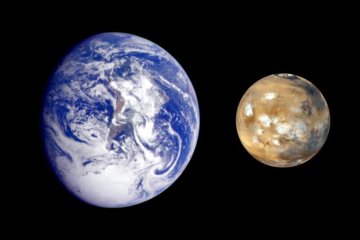All genres
61.
Journal Article
Electron temperature anisotropy constraints in the solar wind. Journal Geophysical Research 113, A03103 (2008)
62.
Journal Article
Cool and hot components of a coronal bright point. Astrophysical Journal 681, pp. L121 - L124 (2008)
63.
Journal Article
Sizes of transition-region structures in coronal holes and in the quiet Sun. Astronomy and Astrophysics 482, pp. 267 - 272 (2008)
64.
Journal Article
Signature of mass supply to quiet coronal loops. Astronomy and Astrophysics 478, pp. 915 - 919 (2008)
65.
Journal Article
Space weather explorer - The KuaFu mission. Advances in Space Research 41, pp. 190 - 209 (2008)
66.
Journal Article
Collisionless damping of parametrically unstable Alfven waves. Journal Geophysical Research 112, A04104 (2007)
67.
Journal Article
Can the solar wind originate from a quiet Sun region? Astronomy and Astrophysics 468, pp. 307 - 312 (2007)
68.
Journal Article
Diffusion plateaus in the velocity distributions of fast solar wind protons. Journal Geophysical Research 112, A03102 (2007)
69.
Journal Article
The radial wavefunction of a relativistic binary of two fermions bound by the Coulomb force. Annalen der Physik 16 (7-8), pp. 553 - 562 (2007)
70.
Journal Article
Evolution of the solar wind proton temperature anisotropy from 0.3 to 2.5 AU. Geophysical Research Letters 34, L20105 (2007)
71.
Journal Article
Coronal ion-cyclotron beam instabilities within the multi-fluid description. Astronomy and Astrophysics 474, pp. 609 - 615 (2007)
72.
Journal Article
Emission heights of coronal bright points on Fe XII radiance map. Advances in Space Research 39, pp. 1853 - 1859 (2007)
73.
Journal Article
Observations of the Sun at Vacuum-Ultraviolet Wavelengths from Space. Part II: Results and Interpretations. Space Science Reviews 133, pp. 103 - 179 (2007)
74.
Journal Article
Correlation Height of the Source Region of Si II Emission Lines in Coronal Hole Regions. Chinese Astronomy and Astrophysics 31, pp. 137 - 145 (2007)
75.
Journal Article
The current-free electric double layer in a coronal magnetic funnel. Astrophysical Journal 640, pp. L199 - L202 (2006)
76.
Journal Article
Addendum and erratum, The relativistic energy spectrum of hydrogen [Ann.Phys.(Leipzig) 14, 324(2005)]. Annalen der Physik 15 (6), pp. 434 - 437 (2006)
77.
Journal Article
Kinetic physics of the solar corona and solar wind. Living Reviews Sol. Phys. 3, 1 (2006)
78.
Journal Article
Solar wind responses to the solar activity cycle. Advances in Space Research 38, pp. 921 - 930 (2006)
79.
Journal Article
Limits on the core temperature anisotropy of solar wind protons. Annales Geophysicae 24, pp. 2057 - 2063 (2006)
80.
Journal Article
Magnetic structure of the solar transition region as observed in various ultraviolet lines emitted at different temperatures. Astronomy and Astrophysics 457, pp. 699 - 706 (2006)











